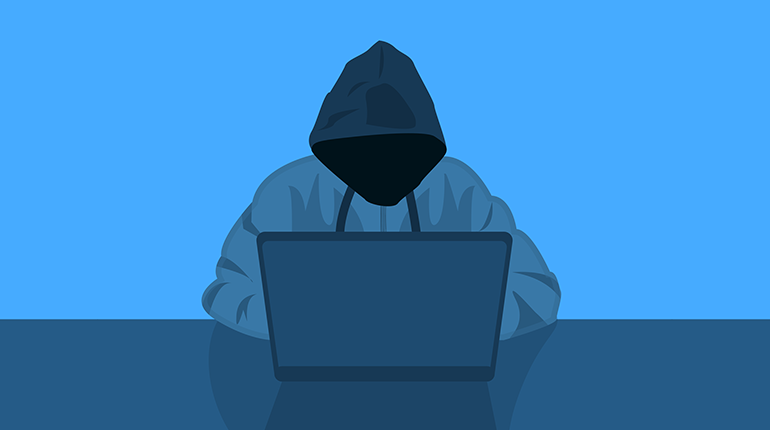Information technology is constantly evolving, and unfortunately, so are the ways cybercriminals exploit businesses and individuals. One of the most common threats to data security is ransomware. It is a type of malware that encrypts files or blocks access to them until victims pay a ransom. Although ransomware is often confused with data breaches, there are some important distinctions between the two. In this blog post, we will look at what is ransomware, the ways it differs from a data breach, and the steps you can take to help prevent both.
What is Ransomware and How Does it Work?
Ransomware is a type of malware that encrypts files on a victim’s computer, making them inaccessible. The attacker then demands a ransom, usually in the form of cryptocurrency, in exchange for the decryption key. Ransomware can spread through malicious emails, infected websites, or exploits in software. Once a computer is infected, the ransomware will start encrypting files. The process is usually very quick, and the victim will soon see a message demanding a ransom. The attacker will usually give a deadline for payment. If the victim does not pay the ransom within that time frame, the price will increase. In some cases, the attacker may threaten to delete the encryption key if the victim does not pay the ransom, making it impossible to decrypt the files. Ransomware can be devastating for victims, as they can lose access to important files or must pay a ransom. However, you can take some steps to protect yourself from ransomware, such as keeping your software up to date and backing up your files regularly.
What is a Data Breach and How can you Prevent One?
A data breach is when an unauthorized person gains access to sensitive information. This can happen when a hacker breaks into a computer system or an employee carelessly leaves company data exposed. Either way, the result is the same: sensitive information falls into the wrong hands.
Data breaches can have dire consequences for both individuals and businesses. For individuals, a data breach can lead to identity theft and financial fraud. For businesses, a data breach can damage their reputation, cost customers, and result in expensive legal penalties. To protect yourself from these risks, it is critical to take steps to prevent data breaches from happening in the first place.
Some simple precautions businesses can take include encrypting data, password-protecting systems, and restricting access to sensitive information. Additionally, all employees should receive training on basic security measures and learn the importance of keeping company data safe. By taking these steps, businesses can reduce the risk of falling victim to a costly data breach significantly.
The Consequences of Ransomware and Data Breaches
Ransomware and data breaches are two of the most serious cyber threats facing businesses and individuals today. Ransomware is a type of malware that encrypts a victim’s files and demands them to pay a ransom to decrypt them. Data breaches occur due to improper access or theft of confidential information. Both ransomware and data breaches can have grave consequences, including monetary loss, damage to reputation, and loss of customer trust. In some cases, ransomware and data breaches can also lead to legal action. To protect themselves from these threats, businesses and individuals should take steps to secure their data, such as implementing strong security measures and encrypting sensitive information. By taking these precautions, they can help reduce the risk of becoming a victim of ransomware or suffering a data breach.
How to Protect your Computer from Ransomware and Data Breaches
Ransomware is a type of malware that encrypts your files and holds them hostage until you pay a ransom. Data breaches occur when hackers gain access to your personal information, such as your password or Social Security number. Both ransomware and data breaches can be costly and cause stress. However, there are several steps you can take to protect your computer from these threats. First, install an antivirus program and run regular scans. Second, create strong passwords for all your online accounts and make sure to change them regularly. Third, be cautious when opening email attachments or clicking on links from unknown sources. Finally, back up your files regularly so that you can recover them in case of encryption or loss in a data breach. By taking these precautions, you can help safeguard your computer against ransomware and data breaches.
The Difference Between Ransomware and Data Breaches
There has been a lot of confusion lately about the difference between ransomware and data breaches. To put it simply, a data breach is when an unauthorized party gains access to your data, while ransomware encrypts your data, and you receive a notice to pay ransom to decrypt it. While both can be devastating, there are some key differences that you should be aware of. First, you can prevent data breaches with proper security measures, while ransomware is much harder to defend against. Secondly, data breaches can result in the loss of sensitive information, while ransomware typically only affects files you can replace (such as photos or documents). Finally, you can often resolve data breaches without paying a ransom, while ransomware always requires payment to decrypt your files. As you can see, there are some key distinctions between these two types of threats. understanding these differences is essential for keeping your data safe.
Conclusion
Ransomware and data breaches are serious threats to both individuals and businesses. By understanding what they are, how they work, and the steps you can take to protect yourself, you can reduce your risk of becoming a victim. At SMS Datacenter, we have the expertise to help businesses protect their data and systems from ransomware and data breaches. We designed our solutions to give you peace of mind knowing your important data is secure. Contact us today for more information about our Ransomware Protection Services.

